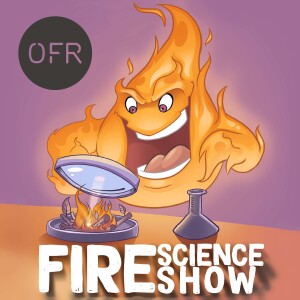
The last time I had Xinyan on the show was in 2021, and we were all excited about the possibilities that AI could bring to Fire Safety Engineering and Smart Firefighting. Three years have passed, and while we are still excited, we can now talk about experiences. What worked and what did not? Where were the challenges, and what was simple? You can only learn that from brainstorming, you learn this by doing. Xinyan's team implemented dozens of algorithms for various projects, and it is this experience we try to explore today.
The episode is bitter-sweet. Even though considerable progress was made in the AI layer, it is still not possible to implement this in firefighting. The barriers that always separated fire science from firefighting are still in place, and it is even harder to cross them with such a novel approach. As always, communication is the key. However, in the midst of the research, a realization was made. AI does not work that great with humans, but works perfectly well with robots. This gives a beginning to a new chapter - AI-powered robotic firefighting, and hell, this is really exciting stuff.
Besides smart firefighting, we spend good time discussing use of AI in Fire Safety Engineering itself. Xinyan's team is developing practical tools to assist the designers and engineers, and they look promising. What is most interesteing is that the implementation of those tools reasembles how CFD was implemented back in the day - I have huge hopes for this technology.
If you want to read more about AI in PBD FSE, this is the paper you look for: https://www.sciencedirect.com/science/article/pii/S2352710221003867#appsec1
If you want to learn more about the work of the PolyU X Fire Lab, learn more on their up-to-date webpage: https://www.firelabxy.com/
----
The Fire Science Show is produced by the Fire Science Media in collaboration with OFR Consultants. Thank you to the podcast sponsor for their continuous support towards our mission.
More Episodes
Create your
podcast in
minutes
- Full-featured podcast site
- Unlimited storage and bandwidth
- Comprehensive podcast stats
- Distribute to Apple Podcasts, Spotify, and more
- Make money with your podcast
It is Free
- Privacy Policy
- Cookie Policy
- Terms of Use
- Consent Preferences
- Copyright © 2015-2024 Podbean.com







